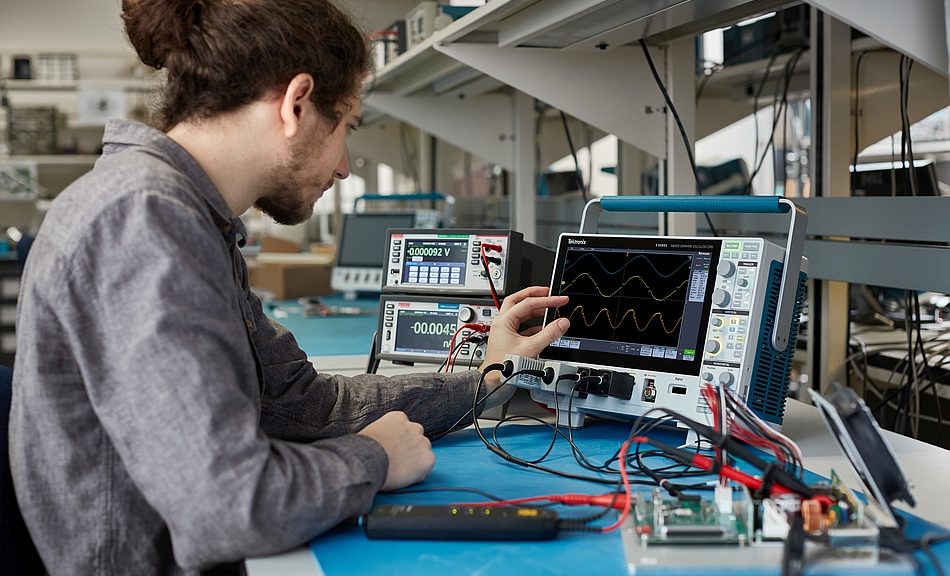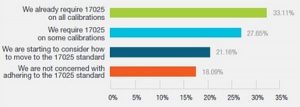- The Tektronix Calibration Services Survey highlights key issues facing calibration program managers and identifies current trends and needs for calibration services in 2022.
- Tektronix conducted the survey with nearly 300 respondents, 91% of whom were U.S. citizens from a variety of industries.
The Tektronix 2022 Calibration Services Trends Survey reveals that:
– The calibration services business is largely driven by requirements, either from a company’s own quality policy, its customers, or its supply chain. Keeping up with current requirements was reported to be a top concern among calibration service managers.
– Accredited ISO/IEC 17025 calibrations are now the de-facto standard across a wide variety of industries, broadening out from the heritage mission-critical industries such as aerospace. It’s widely understood how companies that employ this standard for test equipment calibration save downtime and lost revenue in the long run.
– Turnaround time for calibration services continues to be a top challenge. Respondents strongly placed a priority on reducing turnaround time, with the most preference for achieving same-day or same -week service in 2022, a significant change from the typically 1-2 week service they received in 2021. When coupled with the expressed strong preference for onsite service, Tektronix concludes that organizations continue to focus on reducing the amount of time equipment is taken out of service for calibration service.
– Organizations demand instant, anywhere access to calibration information. Like many other industries, online access to ordering calibration services, certificates, and calibration status updates are strongly desired.
– Companies expect quality, broad capability, and fast service from fewer vendors. From a mix of questions, the survey documented that organizations are seeking fewer vendors with wider capabilities to streamline vendor management. In a correlated query, companies reported that they prefer a hybrid mix of internal calibration capability coupled with external calibration services from a third-party vendor.
– Running a calibration program is still a manual process. Organizations are using spreadsheets and home-grown software to track calibrations and can better take advantage of newer technology options, such as Tektronix CalWeb, to free up time and resources for asset management.
– Educational needs in calibration service are significant and ongoing. From more than 200 comments, the top skills to learn in 2022 were reported as keeping up to date with industry standards, learning how to run a more efficient calibration program, understanding calibration data science, keeping up with new technologies such as RF and high-speed digital equipment, and improving the organization’s use of digital toolsets for managing calibration assets and programs.








